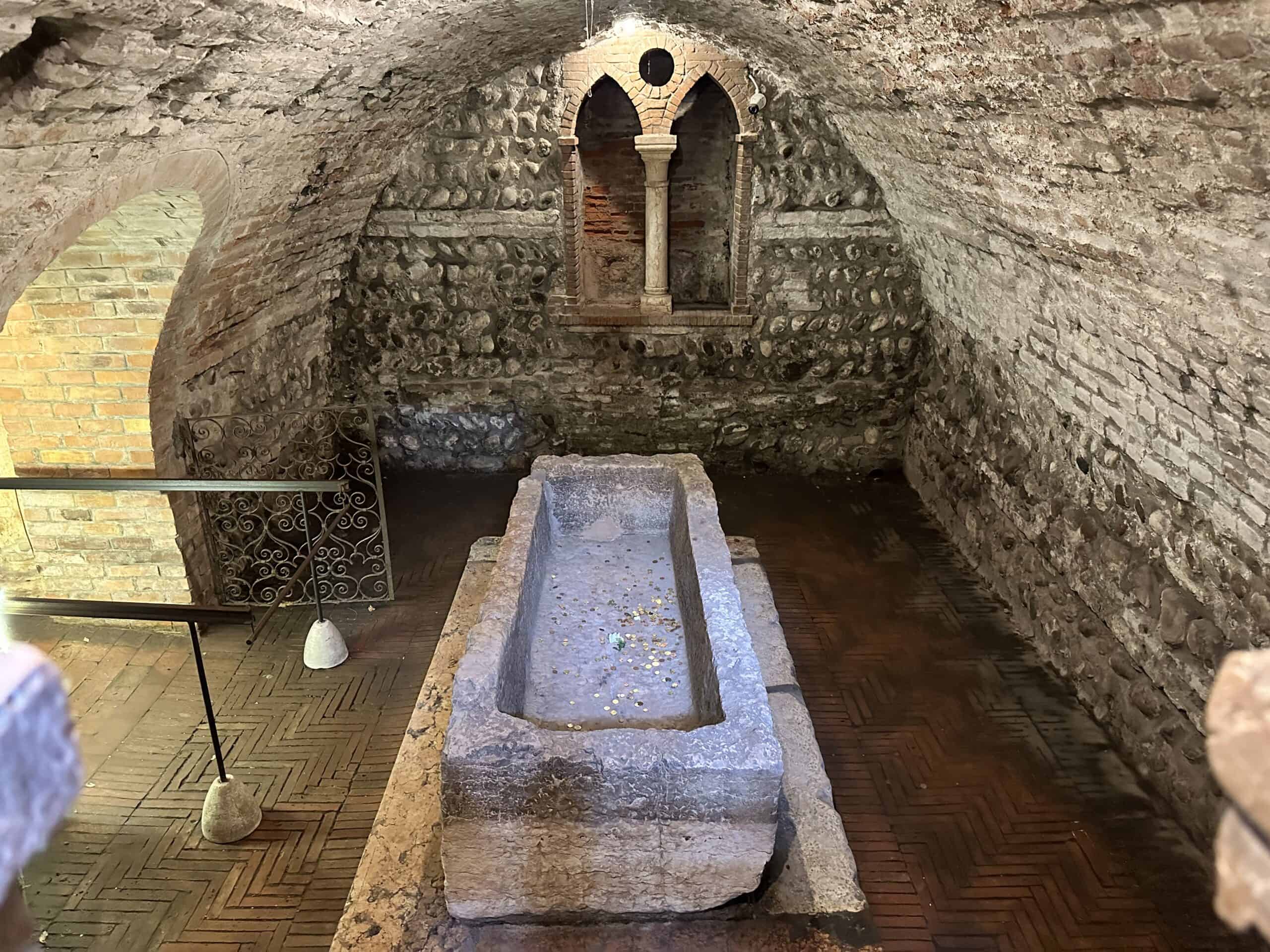
The tradition that identifies Juliet’s burial in this place dates back to the sixteenth century.
Since the early nineteenth century, the tomb became the destination of a sort of vaguely superstitious cult, so much so that visitors frequently removed fragments, as if they were sacred relics.
The tomb was fenced only at the beginning of the 1900s and in 1938 the sarcophagus was restored and moved to its final and current location.
The red marble sarcophagus located in the former convent of San Francesco, now home to the “G.B. Cavalcaselle” Museum of Frescoes, is believed to be Juliet’s tomb.
‘Giovanni Battista Cavalcaselle’ Museum of Frescoes is located on the area of an ancient convent whose origins date back to the thirteenth century. The primitive church of San Francesco al Corso was erected in 1230.
The Museum exhibits numerous frescoes removed from palaces and churches in the city between the nineteenth and twentieth centuries.
























